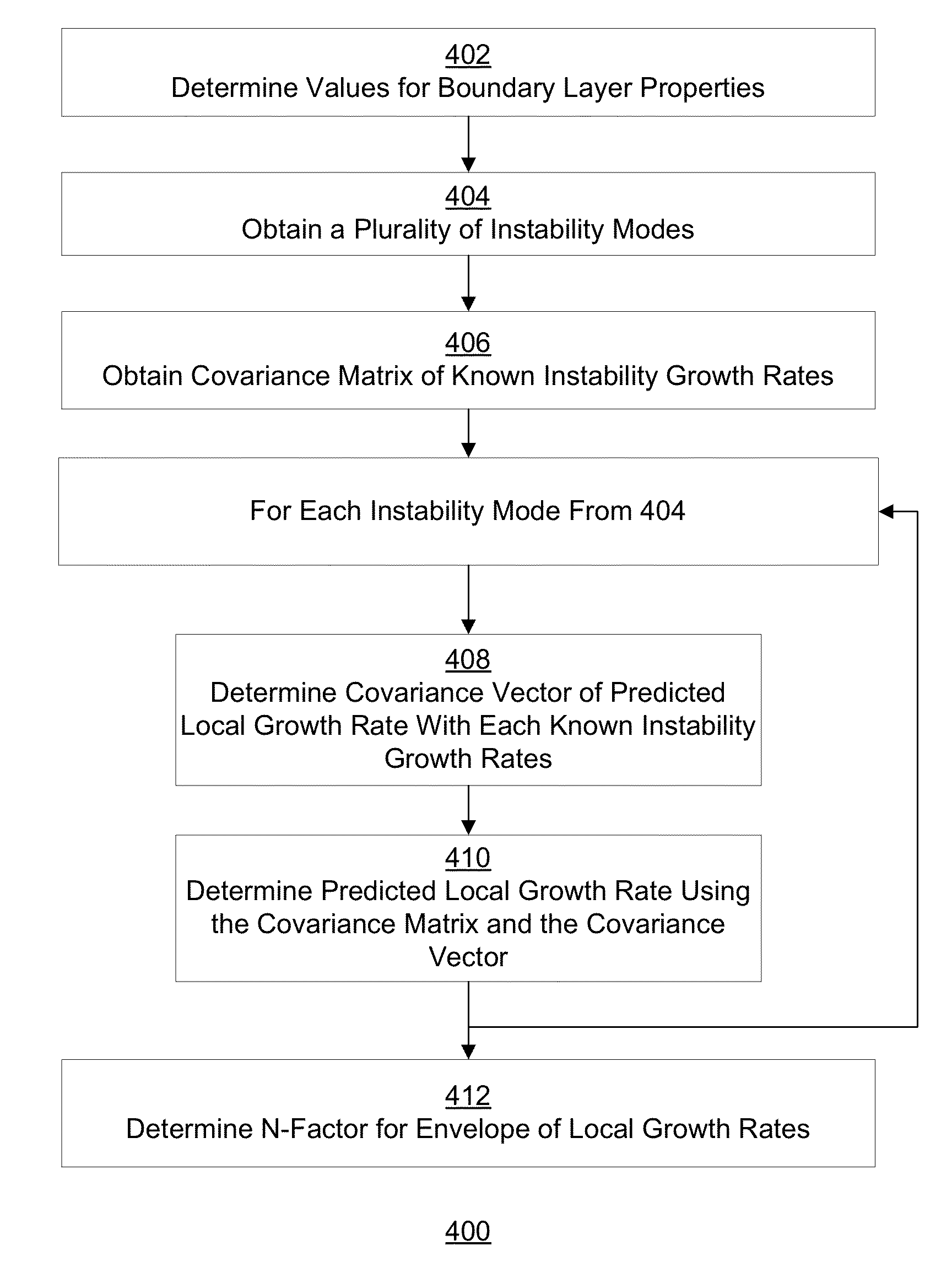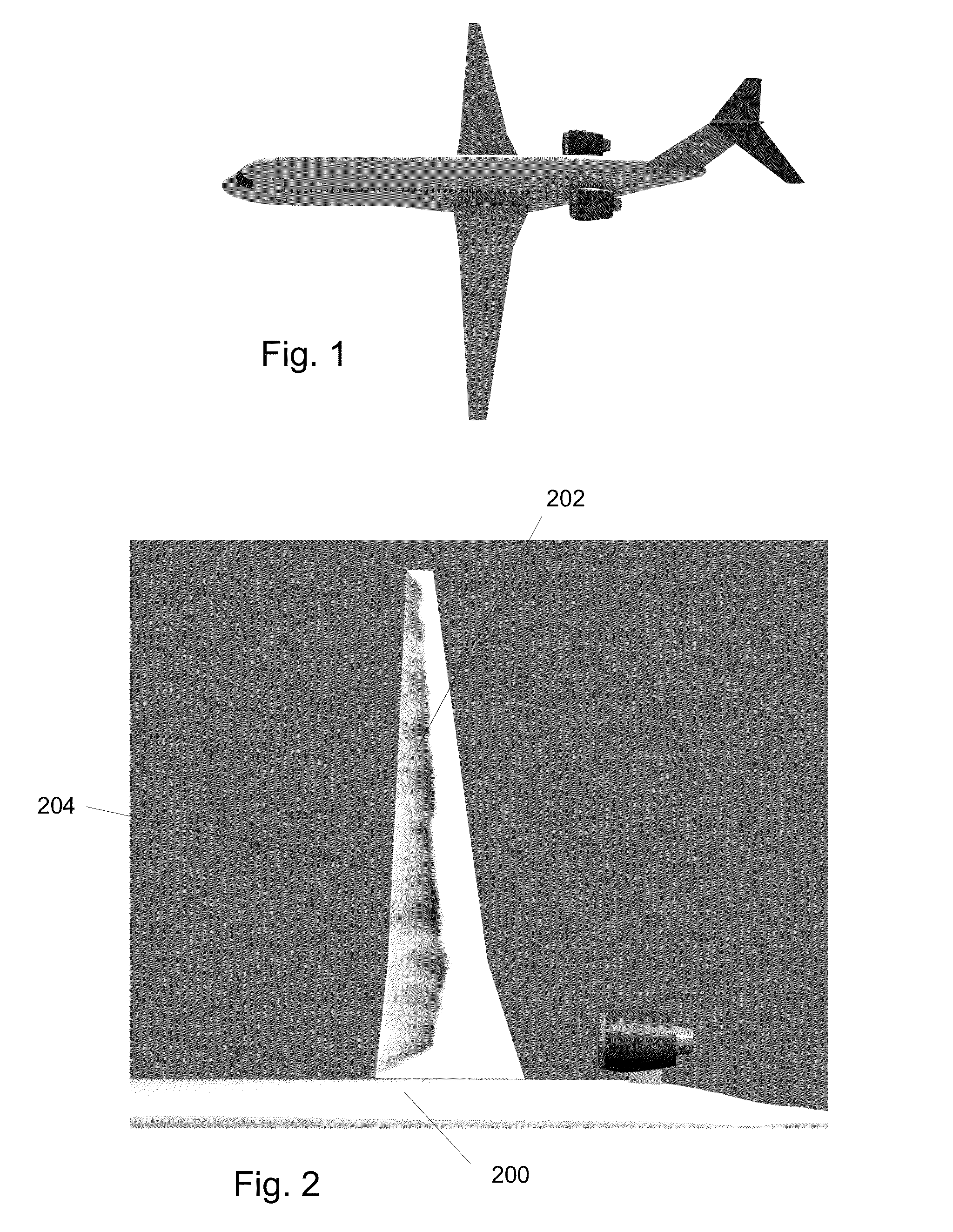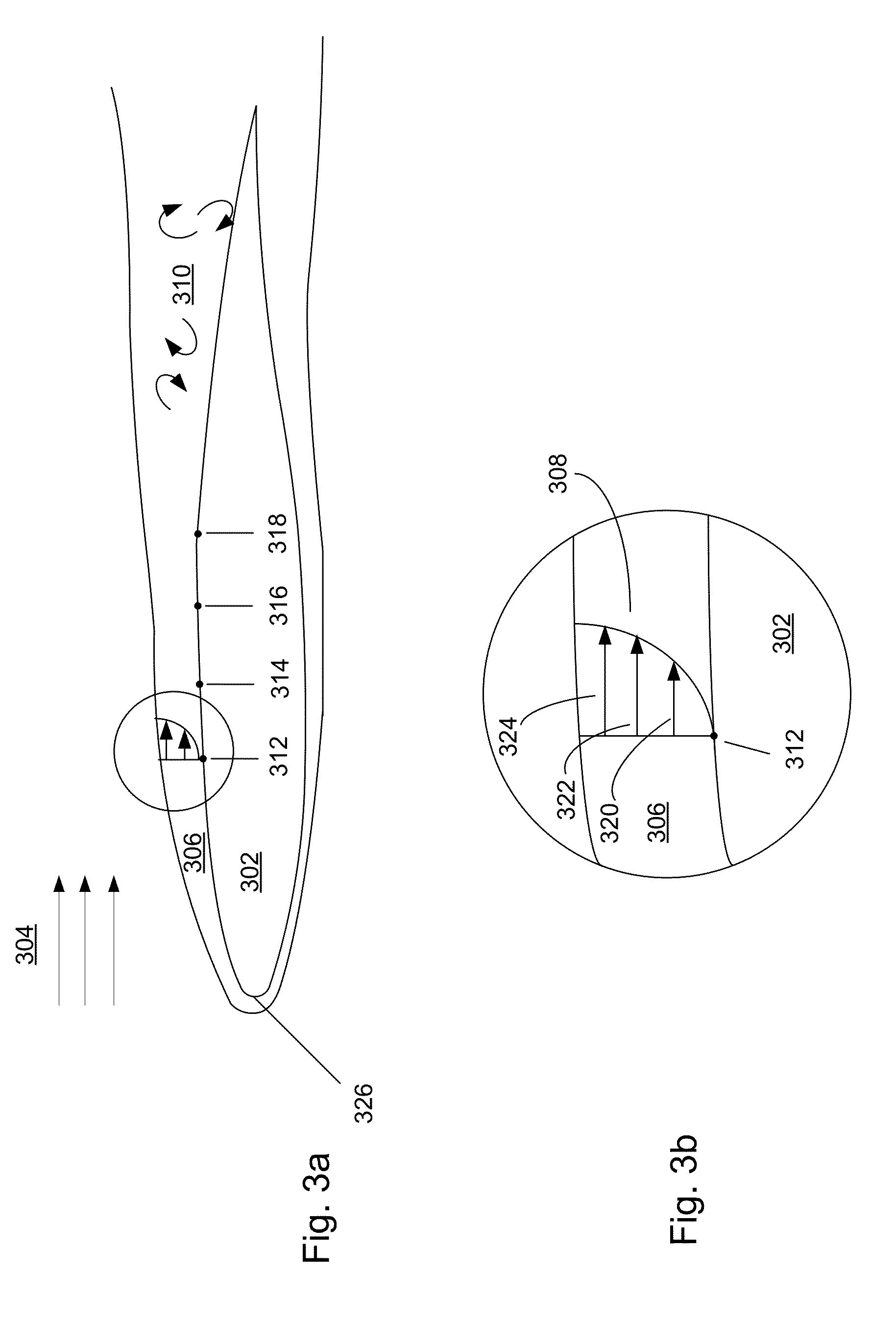Predicting transition from laminar to turbulent flow over a surface
a technology of turbulent flow and simulation, applied in the direction of air flow influencers, instruments, cad techniques, etc., can solve the problems of multiple complex simulations that may be prohibitively time-consuming, prohibitively time-consuming in early design phases, and interaction is not only time-consuming
- Summary
- Abstract
- Description
- Claims
- Application Information
AI Technical Summary
Benefits of technology
Problems solved by technology
Method used
Image
Examples
Embodiment Construction
[0037]FIG. 1 illustrates a transonic natural-laminar-flow (NLF) concept jet. FIG. 2 shows a top view of a portion of a computer-generated simulation of the NLF jet. The shading on the wing 202 is proportional to the combined TS and crossflow instabilities on the upper surface at Mach 0.75 at 33,000 feet. The white areas on the wing 202 indicate regions where turbulent flow is predicted. As seen in FIG. 2, locations near fuselage 200 exhibit turbulent flow closer to the leading edge 204 of the wing 202 as compared to locations further away from fuselage 200.
[0038]The results depicted in FIG. 2 are an example of the output of a computer-generated simulation that allows a designer or engineer to evaluate the performance of an aircraft surface with respect to laminar flow. If necessary, changes can be made to the aircraft surface geometry to optimize or increase the amount of laminar flow. Additional simulations can be performed for modified aircraft surface geometry and the results can...
PUM
 Login to View More
Login to View More Abstract
Description
Claims
Application Information
 Login to View More
Login to View More - R&D
- Intellectual Property
- Life Sciences
- Materials
- Tech Scout
- Unparalleled Data Quality
- Higher Quality Content
- 60% Fewer Hallucinations
Browse by: Latest US Patents, China's latest patents, Technical Efficacy Thesaurus, Application Domain, Technology Topic, Popular Technical Reports.
© 2025 PatSnap. All rights reserved.Legal|Privacy policy|Modern Slavery Act Transparency Statement|Sitemap|About US| Contact US: help@patsnap.com



